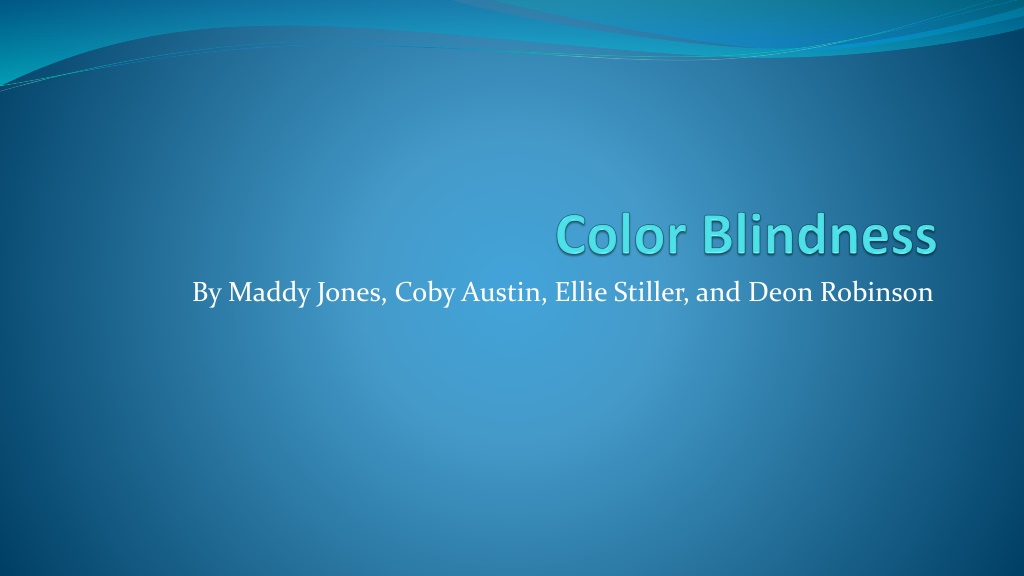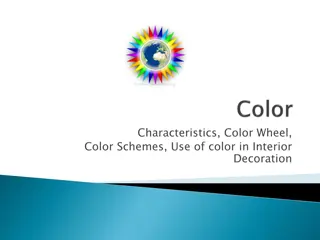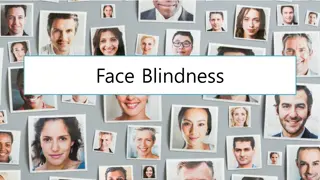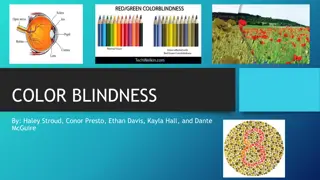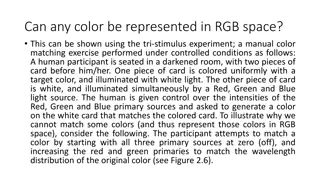Understanding Color Blindness: Causes, Symptoms, and Diagnosis
Color blindness, also known as color vision deficiency, is a genetic disorder that affects the ability to distinguish between colors. John Dalton discovered color blindness in 1794. It is inherited in an X-linked recessive pattern and can cause difficulties in daily life, such as trouble seeing colors accurately. Diagnosis involves tests like the Ishihara Plate test. While color blindness does not lower life expectancy, it can pose risks, like the inability to differentiate between stoplight colors.
Download Presentation

Please find below an Image/Link to download the presentation.
The content on the website is provided AS IS for your information and personal use only. It may not be sold, licensed, or shared on other websites without obtaining consent from the author. Download presentation by click this link. If you encounter any issues during the download, it is possible that the publisher has removed the file from their server.
E N D
Presentation Transcript
By Maddy Jones, Coby Austin, Ellie Stiller, and Deon Robinson
Color Blindness: The history A reduced ability to distinguish between certain colors. Color blindness is also called color vision deficiency. We could not find any information on how color blindness got it s name. John Dalton discovered color blindness in 1794 when he scandalized his family by inadvertently buying his mother a set of racy underwear as a birthday present.
Colorblindness: Type of genetic disorder/How it is inherited Red-green colorvision defects and blue cone monochromacy are inherited in an X-linked recessive pattern. Monochromatic- containing or using only one color. The OPN1LW and OPN1MW genes are located on the X chromosome, which is one of the two sex chromosomes. Onegenetic change in each cell is sufficient to cause the condition.
Colorblindness: Symptoms Trouble seeing colors and the brightness of colors in the usual way. Inability to tell the difference between shades of the same or similar colors, particularly red and green, or blue and yellow.
Effects of colorblindness People with colorblindness see red and green as gray. Rapid eye-movement (in rare cases)
Colorblindness: Diagnosis If you have any eye test with an optometrist (a registered health professional who examines eyes, tests sight and dispenses glasses and contact lenses) they should test your color vision as a matter of routine, but not all chains of opticians in the US do this test routinely and with some of them you may have to request a color vision test specifically and sometimes even pay for it as an extra. There are many tests available to measure color vision defects but the most common is the Ishihara Plate test. This can test for red/green color blindness but not blue color blindness. This is the test most likely to be used for routine color vision screening in schools or medicals.
Colorblindness: Prognosis Color blindness does not directly lower life expectancy. However, it could affect someone by, for example, making them not able to tell the difference between the red and green on a stoplight and being killed in an accident. The family of a person who has colorblindness has to help them out so they can tell them the colors of something in important matters- refer to the example above.
Colorblindness: Treatment There is currently no treatment for inherited colorblindness. Color filters or contact lenses can be used in some situations to enhance the brightness between some colors and these are occasionally used in the workplace, but many color blind people find these actually confusing them further, rather than helping them. They are working on a gene therapy for colorblindness.
Colorblindness: Current research A rainbow of hope for people who are color-blind: New research suggests that gene therapy could one day give such patients the ability to see in full color. The study authors say their findings demonstrate that the brain might be able to reprogram itself when given new sensory information, such as color-recognizing receptors, even when the key period for brain development is over. Until now, it s been assumed that treatment for inherited vision disorders could only be done in very young patients.
Summary of a story My grandpa is colorblind. He learned his colors by working with his mother. He saw stop signs and traffic lights in different colors. For example, instead of seeing red, green, and yellow, he sees gray, blue, and orange. He taught himself which color went with the actual color. So he knew when he saw gray he knew that it was red, orange when it was yellow, and when he saw blue he knew it was green. I sometimes forget that he is colorblind, because he doesn t show that it affects his life. -Ellie Stiller
Bibliography http://www.aao.org/eye-health/diseases/color-blindness-symptoms http://www.bausch.com/your-eye-concerns/diseases-and- disorders/color-blindness#.VwEzu_ldWSo http://www.colourblindawareness.org/colour-blindness/living-with- colour-vision-deficiency/ http://www.news-medical.net/?tag=/Color-Blindness http://www.webmd.com/eye-health/news/20090916/gene-therapy-may- cure-color-blindness
